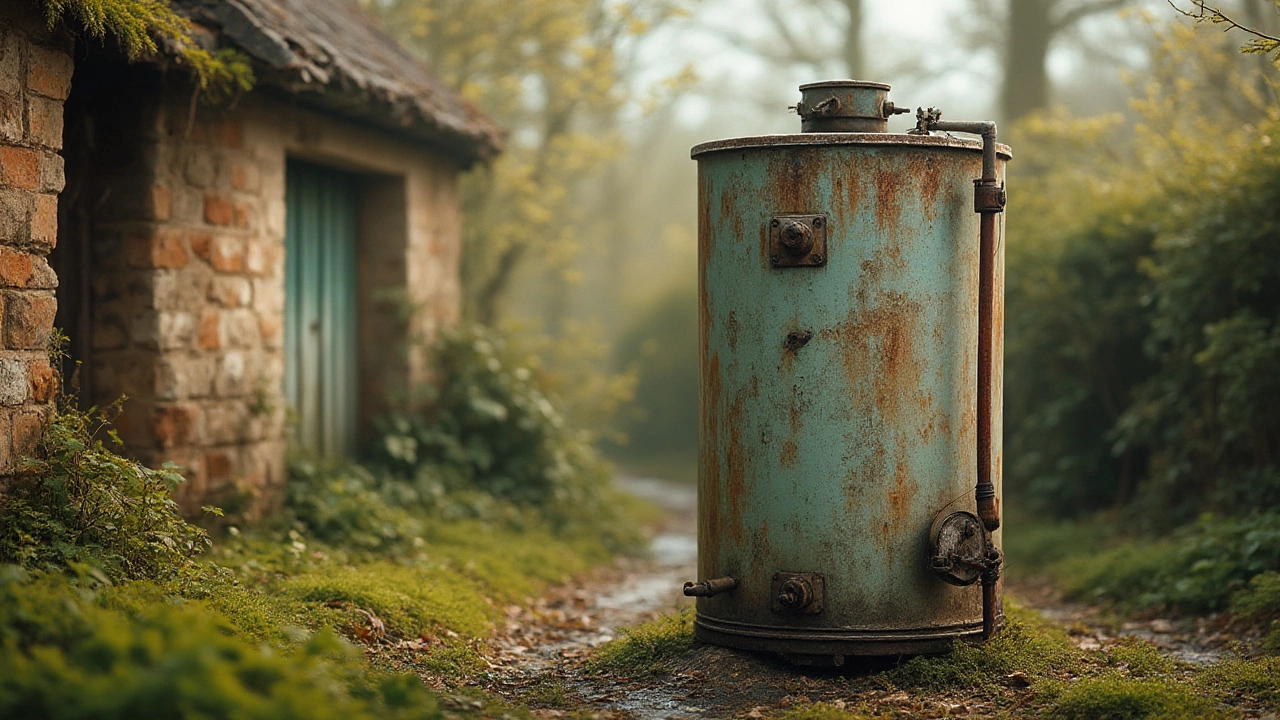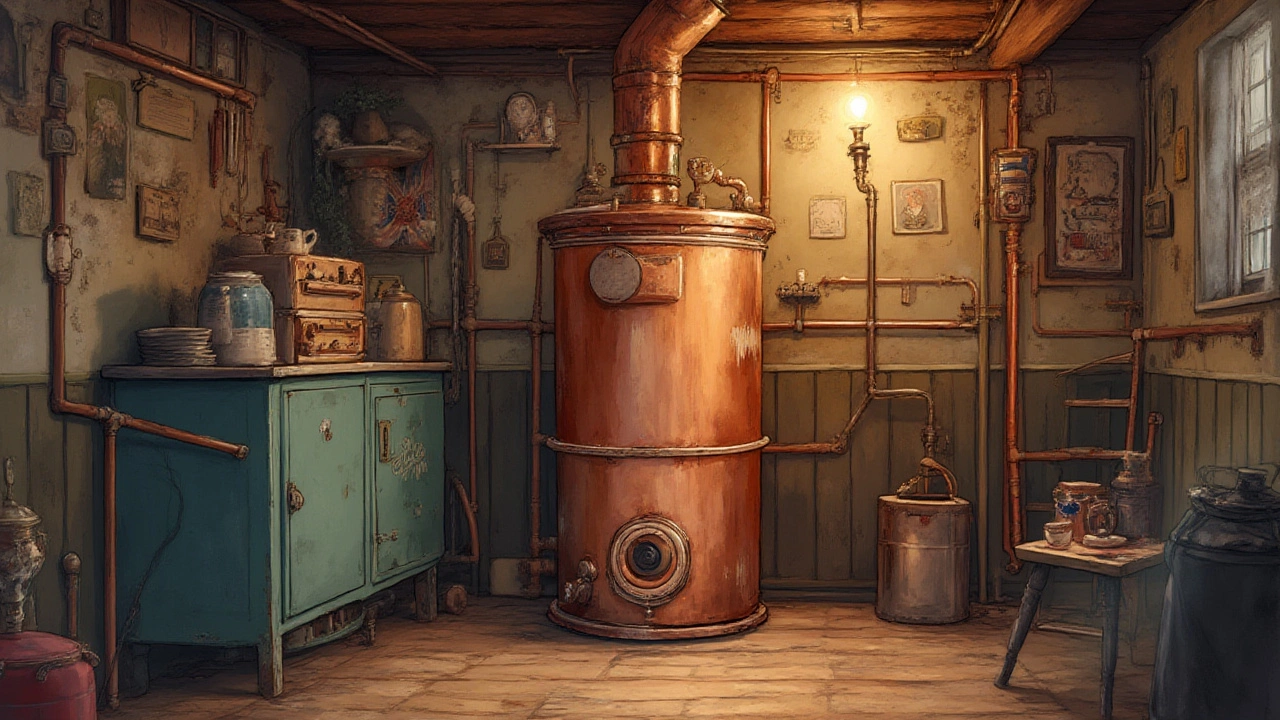Imagine walking down into your basement to check the old hot water heater. The date scrawled on the sticker reads 1995. It's still working. No leaks. Still piping hot showers every morning. Hard to believe? It’s not as rare as it sounds. Every neighborhood’s got a tale about someone’s aunt or grandpa with a relic heater that simply refuses to give up. But is this a miracle — or is it a sign that you could get 30 years from yours?
Here’s the truth: most water heaters don’t even get a shot at three decades. Manufacturers stamp their tanks with an expected life of 8 to 12 years for tank-style heaters. Tankless units, the new kids on the block, shoot for 15 to 20 years. But somewhere out there, there are genuine 30-year heaters humming along like stubborn little legends. And that brings up one burning question:
What really makes some water heaters outlast their own expiration date? Is it blind luck, endless repairs, or is there something you can actually do to get there yourself? Let’s break open the mystery, toss in facts, and hand you a few habits that could squeeze out every last drop of life from your hot water heater.
Why Do Most Hot Water Heaters Not Last 30 Years?
Hot water heaters are like the workhorse nobody thanks. Tucked in garages, basements, utility closets, chugging away daily. But here’s the deal: most people never see their heaters hit the 30-year milestone, and honestly, most heaters tap out much earlier. Why? It’s simple — water heaters are fighting a constant war with water and time, and for most, time wins before year 20 rolls around.
Inside a typical water heater is a steel tank wrapped with glass lining to slow down rust. Over time, water seeps in and gives the steel a run for its money. Then there’s the sacrificial anode rod — literally a chunk of metal designed to rust away before the tank. This rod distracts corrosion from attacking your tank. If you don’t replace it now and then, the tank’s got nowhere to hide. The rod’s a hero, but most folks never even know it’s there until things go wrong.
Next up, sediment. Ever let a cup of tea sit until that gritty stuff settles at the bottom? Imagine that, but with minerals from your water — calcium, magnesium, lime — building up at the bottom of the tank, year after year. It’s like thick mud sitting on the heater’s burner, making it work harder and hotter. Burners crack, elements fizzle, tanks get weak spots until, at last, you’ve got a leak on your hands.
Water quality makes a world of difference. If your home sits in a hard-water region, your heater’s lifespan shrinks. Same goes for old, unflushed tanks. The average family gives little thought to flushing the heater once a year to keep sediment at bay. Skip out, and those tanks work day and night with a belly full of rock.
Manufacturers themselves don’t expect their heaters to survive forever. A warranty on a standard tank is usually six years. Go high-end and it might stretch to 10 or even 12. If you see thirty years, you’re officially in outlier territory.
So, what about those few heaters that do survive three decades? More than luck is at play. They usually have a vigilant owner behind the scenes, pulling off preventive maintenance, swapping out anode rods, draining tanks to clear out sediment, keeping the thermostat from running too hot, and fixing leaks before they get dramatic. It’s not magic — it’s attention and care that most folks just don’t give.
Let’s not pretend, though: technology has changed. Modern heaters use thinner steel, have stricter energy rules, and pack smaller tanks into tighter insulation. An old tank from the nineties, built like a battleship, was probably overbuilt for the job. Today’s heaters are more eco-friendly and cost less to run, but the tradeoff is they might not have the legs for a three-decade marathon. Still, with persistence and the right moves, you can stretch their lifespans further than most.

What Factors Influence Hot Water Heater Longevity?
Lifespan isn’t all about luck. The number on your heater’s birthday sticker matters less than how you treat it and the environment it’s working in. A few things come together to decide whether your heater makes it to the big 3-0 or bows out before its teens.
First off, maintenance is the real game-changer. There are stories out there of heaters hitting their third decade, but ask the owners — most haven’t ignored their machines. Flushing the tank every year is a must. When you do a quick drain, you clear away the layer of minerals and sediment before it hardens into a problem. Even a five-minute flush can help keep your heater running smooth.
Check the anode rod every few years. It’s the unsung hero, taking all the corrosion itself. Most rods last 3-5 years. Swapping it out can nearly double your heater’s lifespan. I once knew a landlord who had two heaters: one she maintained like clockwork, the other she ignored. The well-loved one made it 28 years. The forgotten? Dead at 12. That’s the kind of difference one metal rod makes.
Water quality, especially hardness, is next. If your area’s known for hard water, minerals will build up quicker. Installing a water softener helps, though it doesn’t work miracles overnight. Soft water minimizes scale but comes with its own maintenance. Either way, know what you’re working with — a county’s water report gives clues about what’s running through your pipes.
Thermostat settings matter too. Most heaters ship out set higher than you need; 120°F is plenty hot for comfort and safety. Cranking it higher speeds up tank wear, shortens the anode rod’s life, and encourages more mineral deposits. Lower temps slow the aging process and save you a bit on energy bills.
Installation quality is another quiet killer. A water heater put in by someone who skips key steps — like not adding an expansion tank or failing to align vent pipes — will struggle from the start. Shoddy installation means stress points, constant small leaks, or backdraft issues that eat away at parts, unnoticed until a problem blows up. Always check that whoever fits your tank knows what they’re doing.
Location plays a part too. A heater stuck in a dank basement will probably have more rust issues, while one in a milder, drier space might sidestep early death by corrosion. Flood-prone basements, or those with salt in the air (if you’re living coastal), will wear a tank down. It’s not paint-and-lace decor, but the space your heater sits in counts for a lot.
Don’t ignore usage patterns, either. If you have a big family, daycare in the home, or run laundry on hot cycles all day, the heater never gets a break. More cycles mean more expansion, contraction, and faster parts wear. Single folk or empty nesters often see their heater outlast its cousins next door simply by sheer luck of having less to do.
Then there’s brand and model. Some older heaters — like the old-school Bradford Whites or Rheem units from the '80s and '90s — were built like tanks, with thicker walls and beefier components. Today’s equivalents still have reputable names, but cost-cutters sometimes mean thinner tanks to save a few dollars (and meet higher efficiency targets). Do a little homework before buying a new one, especially if you dream of a 30-year marathon.
So, can you control most of these factors? Yes. Some, like location or water chemistry, are out of your hands. But how you treat your heater — that’s all on you. With a little regular focus, you’re setting your water heater up for its best shot at the long haul.

Tips to Make Your Hot Water Heater Last Decades
Getting thirty years from a hot water heater isn’t an accident — it’s usually the result of a little obsession and a lot of attention. If you want your heater to join the rare club, here’s EXACTLY what to do:
- Flush your tank yearly: Find the drain valve at the bottom, hook up a hose, and let water out until the water runs clear. It’s dull, but it’s the best way to keep sediment from baking hard onto the bottom.
- Change that anode rod every 3-5 years. Many people never touch it, but a new rod costs less than $50 and protects the whole tank.
- Check for leaks often. Tiny drips around valves or at the bottom are early warning signs. If you see any, don’t ignore them.
- Lower your thermostat to 120°F. This reduces tank stress and slows scale formation. Most people won’t notice the difference in showers.
- If you move to a new house, check how old the heater is and if it was ever maintained. A little history check goes a long way.
- Install a water softener if you have hard water. You’ll see less white scale on faucets and the inside of the kettle — a sign it’s helping your heater too.
- Make sure every heater is installed right. Pay attention to code, venting, expansion tanks, and earthquake straps if you’re in a shaky zone.
- Consider insulating the heater and hot water lines, especially if it sits in a cold garage or drafty basement. This reduces heat loss and lightens the tank’s workload.
- If you’re buying a new tank, go for a model with a long warranty. It usually means better guts inside.
Here’s a cool fact: there’s a documented case of a Rheem water heater in Pennsylvania that lasted nearly 40 years before the homeowner finally replaced it — and only because peace of mind was worth more than the bragging rights. That old tank had its anode rod replaced five times and was drained every spring. If he’d ignored it, the tank probably would have corroded out in 12 years like most others in the neighborhood.
Tankless models deserve a mention, too. While most last 15-20 years, the same maintenance habits pay off even more. Regular descaling prevents mineral buildup in the heat exchanger, which is their main pain point. Lorelai, my wife, once pointed out how our neighbor’s tankless heater developed strange knocking sounds because it had never been flushed. It needed expensive repairs years before its moment should have come. A little vinegar flush each year could have stopped that bill in its tracks.
Don’t forget: sometimes a super old heater is a ticking time bomb. A tank might last a long time, but metal fatigue is real. If you notice major rust, strange noises, or any leaks around the seams, it might be time for a replacement — not just for your sanity but for your basement’s safety. Water heaters have a nasty habit of failing overnight, and one bad leak can turn a great heater into an expensive flood.
If you love a challenge, treat your next water heater like a vintage car — regular oil changes, the occasional tune up, lots of checks. The secret club of 30-year heaters is small because most folks just let theirs run themselves into the ground. With a little attention, yours might earn a few decades’ worth of hot showers too. If it does, brag to the neighbors — you’ll have earned it.




